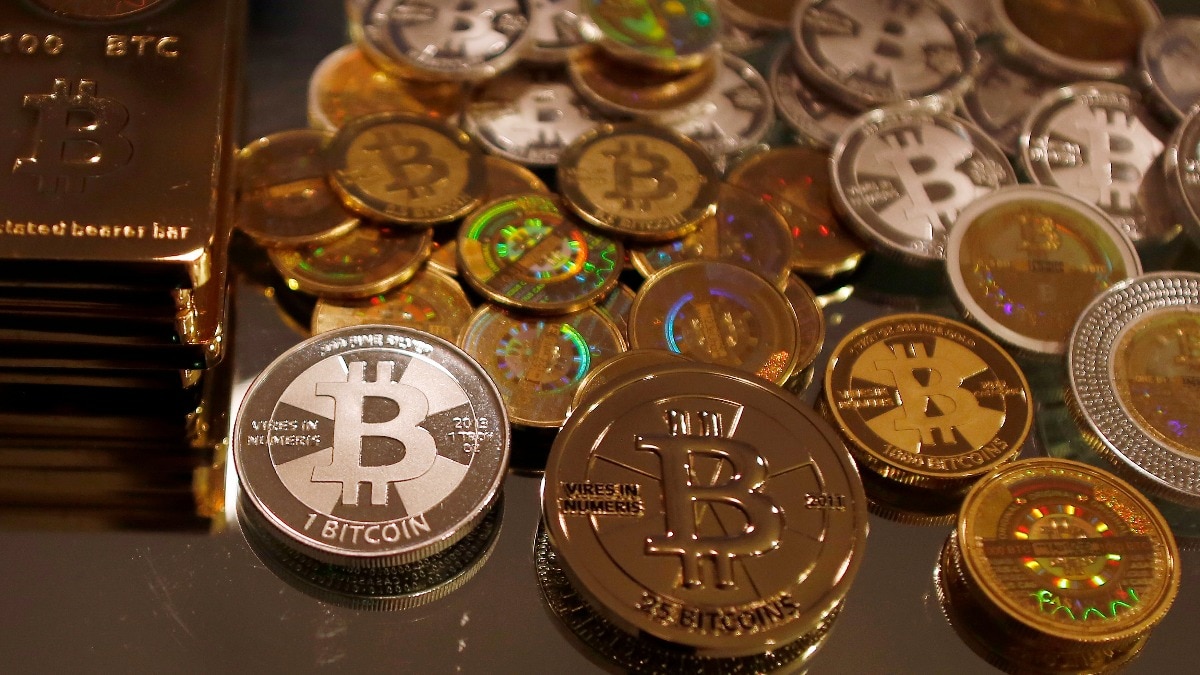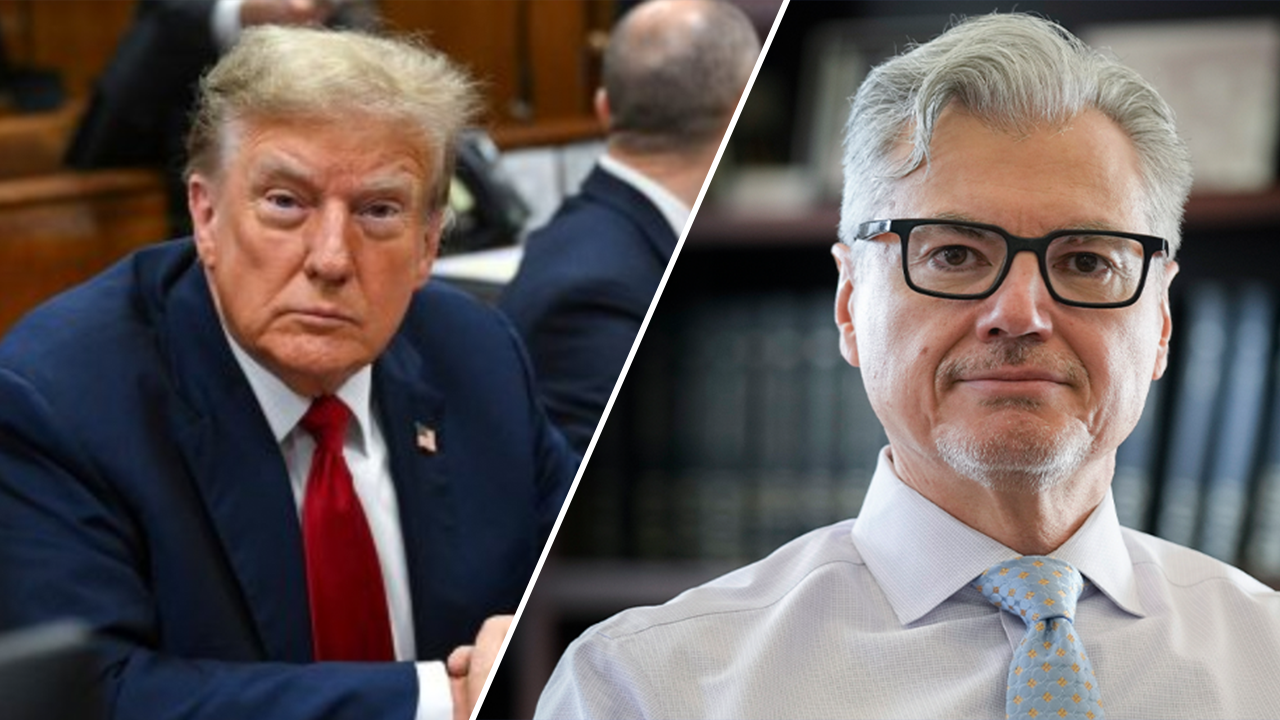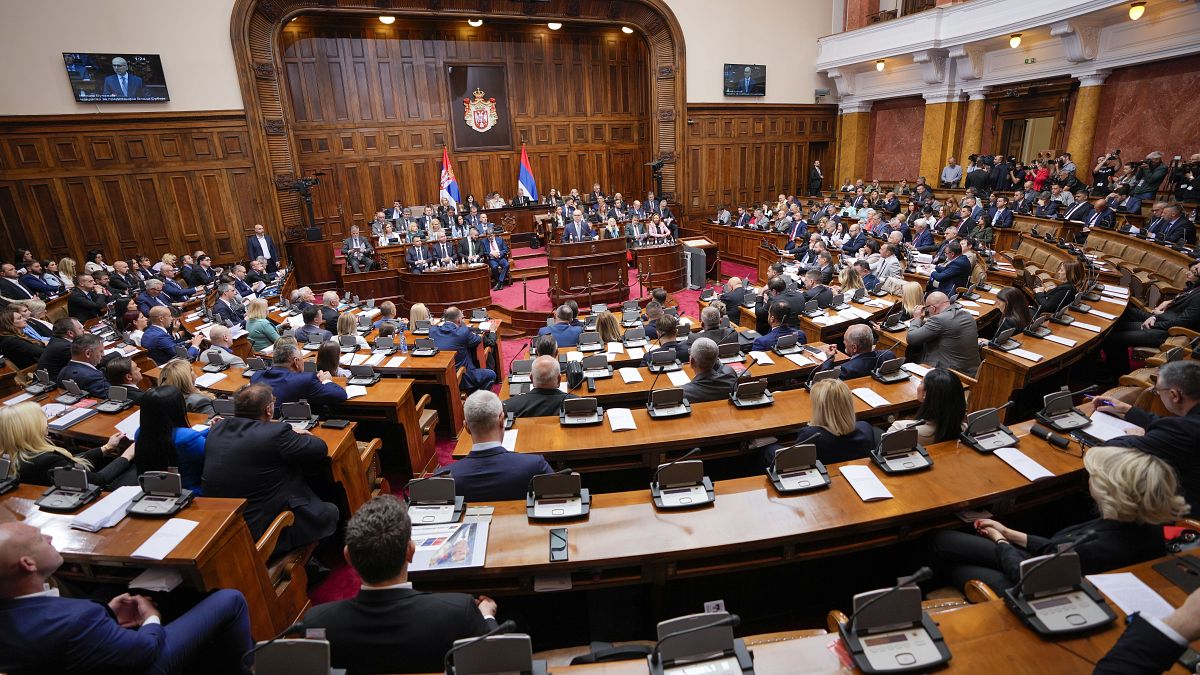Crypto
Crypto Price Today: Bitcoin holds above $30,000; XRP, Cardano rises up to 5%

Bitcoin (BTC) fell 0.07% to $30,077, whereas Ethereum (ETH) was above the 1,900 level. BTC volume stood at approximately $11.45 billion, falling 16.25% in the last 24 hours.
“BTC continues to perform within a narrow range of less than 2%, around $30k. In the last 24 hours, XRP continued to be amongst the top performers in terms of volumes and price change. Interestingly, XRP has surpassed the trading volumes of BTC on a majority of exchanges ever since the court ruling against SEC fell in its favor,” Shubham Hudda, Senior Manager at CoinSwitch Markets Desk, said.
The total volume in DeFi is currently $1.97 billion, 6.5% of the total crypto market 24-hour volume. The volume of all stablecoins is now $27.21 billion, which is 89.66% of the total crypto market 24-hour volume.
The market cap of Bitcoin, the world’s largest cryptocurrency, crossed the $585 billion mark on Friday. Bitcoin’s dominance is currently 48.29%, a decrease of 0.09% over the day, according to CoinMarketCap.”The price of Bitcoin bounced off its multi-week low of $29,500 today, reaching a high of $30,000. The move was likely driven by a combination of factors, including the recent approval of two spot Bitcoin ETF applications by the SEC, as well as positive news from XRP,” said, CoinDCX Research Team.
Rajagopal Menon, Vice President at WazirX, said, “Major market oscillators point to a Neutral sentiment. The Relative Strength Index (14) sits at 51, with a neutral outlook. The Stochastic %K (14, 3, 3) at 18 and the Average Directional Index (14) at 31 indicate a Neutral outlook.””The MACD Level (12, 26), at 240, indicates Sell. The Stochastic RSI Fast (3, 3, 14, 14) is Neutral at 4 and William’s Percentage too indicates a Neural sentiment at -80,” Menon added.
Crypto Cart: Quick Glance (Source: coinmarketcap.com, data as of 11.19 hours, IST on July 20, 2023)
Bitcoin $30,077 -0.07%
Ethereum $1,905 -0.45%
Tether $1 -0.01%
BNB $242 -0.51%
XRP $0.8395 4.94%
Cardano $0.3294 3.13%
Dogecoin $0.07085 1.7%
Solana $26.77 1.2%
Polygon $0.7658 1.69%
Litecoin $92.8 -0.99%
Polkadot $5.29 0.7%
Tron $0.08091 0.98%
Shiba Inu $0.000007776 -0.61%
(Note: Price change in last 24 hours)
(Disclaimer: Recommendations, suggestions, views and opinions given by the experts are their own. These do not represent the views of The Economic Times)

Crypto
Cryptocurrency: Top 3 Coins To Buy Now In Anticipation of Ethereum ETF Approval

As the cryptocurrency market eagerly awaits the potential approval of an Ethereum Exchange-Traded Fund (ETF), investors are on the lookout for coins that could benefit from this development.
The approval of an Ethereum ETF would mark a major milestone for the crypto industry, potentially opening the doors to increased institutional investment and mainstream adoption.
In this article, we will explore the top three coins to consider buying now in anticipation of the ETH ETF approval: Ethereum (ETH), Optimism (OP), and Arbitrum (ARB).
Also read: Chainlink Weekly Price Prediction: Can LINK Hit $20?
Ethereum (ETH)
Ethereum is the obvious choice for investors looking to capitalize on the potential Ethereum ETF approval. As the pioneer of smart contracts and decentralized applications (dApps), Ethereum has established itself as the backbone of the decentralized finance (DeFi) ecosystem.
Currently trading at $3,789.53, ETH has experienced a remarkable 22.07% increase in the past 24 hours, with a 24-hour low of $3,078.06 and a high of $3,762.00. The anticipation of the ETF approval has already sparked interest in Ethereum, and if the approval comes to fruition, ETH could potentially see even further price appreciation.
Also read: Cryptocurrency: Top 3 Meme Coins That Can Double Your Investment In 2024
Optimism (OP)
Optimism, a layer 2 scaling solution, has been gaining traction among investors and developers alike.
Currently trading at $2.92, OP has seen a 14.69% increase in the past 24 hours, with a 24-hour low of $2.50 and a high of $2.96. As the demand for layer 2 solutions grows and the anticipation of the Ethereum ETF approval builds, Optimism is well-positioned to benefit from the increased attention and potential influx of investment.
Also read: Ethereum (ETH) Forecasted To Hit $10,000: Here’s When
Arbitrum (ARB)
Arbitrum, another layer 2 scaling solution for Ethereum utilizes optimistic rollups to provide a high-speed, low-cost environment for DeFi applications and other Ethereum-based projects.
Currently trading at $1.19, ARB has experienced a remarkable 21.98% increase in the past 24 hours, with a 24-hour low of $0.968 and a high of $1.19. As more projects migrate to Arbitrum and the anticipation of the Ethereum ETF approval continues to build, ARB could potentially see further price appreciation and increased demand.
The potential approval of an ETH ETF has generated excitement and anticipation within the cryptocurrency community. As investors seek to capitalize on this potential milestone, ETH, Optimism, and Arbitrum have emerged as top contenders for consideration.
Also read: Ripple Unveils Its Total XRP Holdings in Q1 Report
Crypto
FIT21 Act Aims to Streamline Cryptocurrency Regulations in the U.S.

This month marks a potential turning point for the cryptocurrency industry as the House of Representatives gears up to vote on the Financial Innovation and Technology for the 21st Century Act (FIT21).
The FIT21 bill, formally designated as HR 4763, seeks to streamline cryptocurrency regulation across the United States. It aims to establish a clear regulatory framework for digital assets, addressing their unique characteristics and ensuring consumer protections.
Regulatory Roles and Classifications
A primary objective of the bill is to delineate the regulatory roles of the Commodity Futures Trading Commission (CFTC) and the Securities and Exchange Commission (SEC). This distinction is critical because it determines whether digital assets are classified as securities or commodities, thereby affecting their regulation.
Under the proposed legislation, the CFTC would regulate digital assets if the associated blockchain or digital ledger is both functional and decentralized. Conversely, the SEC would oversee assets as securities if the blockchain is functional but not decentralized. Decentralization, as defined by the bill, means that no single entity controls more than 20% of the digital asset or its voting power.
Support and Criticism Over The FIT21
The bill has garnered bipartisan support but also faced criticism, particularly from the crypto community. Some stakeholders are concerned about the bill’s strict decentralization requirements, fearing it grants the SEC excessive power to withdraw support from tokens or projects that shift towards centralization. Additionally, there are worries that the bill does not clearly delineate the boundaries between the SEC and the CFTC’s authorities, potentially leading to regulatory confusion.
Despite these concerns, proponents of FIT21 argue that the bill will provide the regulatory clarity the crypto industry needs to thrive in the U.S. They believe that clear rules will help crypto businesses gain public trust, innovate with confidence, and ensure accountability for bad actors. As the House of Representatives prepares to vote, the entire crypto industry is watching closely, hopeful that FIT21 will usher in a new era of clear and effective regulation.
Comparison with the EU’s Approach
This development is particularly significant considering that the European Union (EU) has made substantial strides in creating a comprehensive regulatory framework for cryptocurrencies, leaving the United States trailing with a fragmented and uncertain regulatory landscape.
The EU has taken a proactive approach to cryptocurrency regulation with the introduction of the Markets in Crypto-Assets (MiCA) framework. MiCA aims to establish a clear and harmonized set of rules across all EU member states, providing legal certainty for both cryptocurrency businesses and investors.
This regulation covers a wide range of crypto assets, including utility tokens, stablecoins, and other digital assets, ensuring they are subject to robust consumer protection, transparency, and anti-money laundering (AML) requirements. MiCA’s comprehensive nature and its focus on consumer protection and market integrity make it a pioneering piece of legislation in the crypto space.
In contrast, the regulatory approach in the United States has been piecemeal and inconsistent. Multiple regulatory bodies, including the Securities and Exchange Commission (SEC), the Commodity Futures Trading Commission (CFTC), and the Financial Crimes Enforcement Network (FinCEN), have jurisdiction over different aspects of the cryptocurrency market.
This fragmented regulatory environment has created uncertainty for crypto businesses and investors, as they must navigate a complex web of regulations that can vary significantly from one state to another. Additionally, the lack of clear guidance on the classification of certain crypto assets has led to legal disputes and enforcement actions that further complicate the regulatory landscape.
The U.S. Regulatory Landscape
One of the key areas where the EU has outpaced the U.S. is in the regulation of stablecoins. MiCA includes specific provisions for stablecoins, recognizing their potential to facilitate payments and enhance financial inclusion while also addressing the risks they pose to financial stability and monetary policy. In the U.S., however, stablecoin regulation remains largely undeveloped, with various proposals and reports yet to culminate in a cohesive regulatory framework.
Moreover, the EU’s regulatory approach reflects a more collaborative and forward-looking stance. European regulators have engaged with industry stakeholders to develop regulations that foster innovation while ensuring robust oversight. This approach contrasts with the U.S., where regulatory actions have often been reactive and enforcement-focused, potentially stifling innovation and driving crypto businesses to more favorable jurisdictions.
As the House of Representatives prepares to vote on FIT21, the outcome could significantly influence the future trajectory of the cryptocurrency industry in the United States, potentially aligning it more closely with the comprehensive and proactive regulatory framework established by the EU.
Crypto
Nirmala Sitharaman Advocates For Worldwide Understanding In Crypto Regulation – Forbes India

FM Sitharaman highlighted the ongoing discussions within the finance ministry and among various regulators since 2020 Image: Hardik Chhabra/ The India Today Group via Getty Images
In a recent interview with businessline, India’s Finance Minister Nirmala Sitharaman shared her perspectives on the future of cryptocurrency regulation in India. She emphasised the need for a global consensus and collaboration to manage this borderless technology effectively.
Recognising the growing importance of crypto assets, the Finance Act 2022 introduced tax regulations for these assets in India. Under the Income Tax Act of 1961, they are classified as “virtual digital assets” (VDAs). According to Section 115BBH, income from the transfer of VDAs is taxed at a flat rate of 30 percent. Taxable events include converting digital assets to fiat currency, trading between different types of VDAs, and using them to purchase goods and services.
Starting July 1, 2022, a 1 percent Tax Deducted at Source (TDS) is also applied to Virtual Digital Assets (VDAs) transfers. This TDS applies to transactions exceeding Rs10,000 and Rs50,000 for specified persons.
Crypto exchanges handle TDS deductions on sell transactions, while buyers are responsible for peer-to-peer deals. Adhering to TDS obligations ensures compliance and avoids potential financial or legal issues.
FM Sitharaman highlighted the ongoing discussions within the finance ministry and among various regulators since 2020, even before India assumed the G20 Presidency. The Reserve Bank of India (RBI) has consistently expressed concerns over the stability of cryptocurrencies, aligning with the government’s cautious stance. The Securities and Exchange Board of India (SEBI) has also contributed to the discourse, suggesting that multiple regulators should oversee the sector.
During India’s G20 Presidency, significant efforts were made to foster a global understanding of cryptocurrency regulation. The International Monetary Fund (IMF) and the Financial Stability Board (FSB) were brought into the conversation, and well-researched papers supported extensive discussions.
Sitharaman reiterated that a regulation confined to a single country would be insufficient for a technology that inherently transcends borders. She firmly believes effective regulation can only be achieved through a globally coordinated effort.
Shashank is the founder of yMedia. He ventured into crypto in 2013 and is an ETH maximalist.
Twitter: @bhardwajshash
-

 News1 week ago
News1 week agoSkeletal remains found almost 40 years ago identified as woman who disappeared in 1968
-

 World1 week ago
World1 week agoIndia Lok Sabha election 2024 Phase 4: Who votes and what’s at stake?
-

 World1 week ago
World1 week agoUkraine’s military chief admits ‘difficult situation’ in Kharkiv region
-

 Movie Reviews1 week ago
Movie Reviews1 week agoAavesham Movie Review
-

 News1 week ago
News1 week agoTrump, Reciting Songs And Praising Cannibals, Draws Yawns And Raises Eyebrows
-

 Movie Reviews1 week ago
Movie Reviews1 week agoUnfrosted Movie Review: A sweet origins film which borders on the saccharine
-

 World1 week ago
World1 week agoCatalans vote in crucial regional election for the separatist movement
-

 Politics1 week ago
Politics1 week agoNorth Dakota gov, former presidential candidate Doug Burgum front and center at Trump New Jersey rally



















